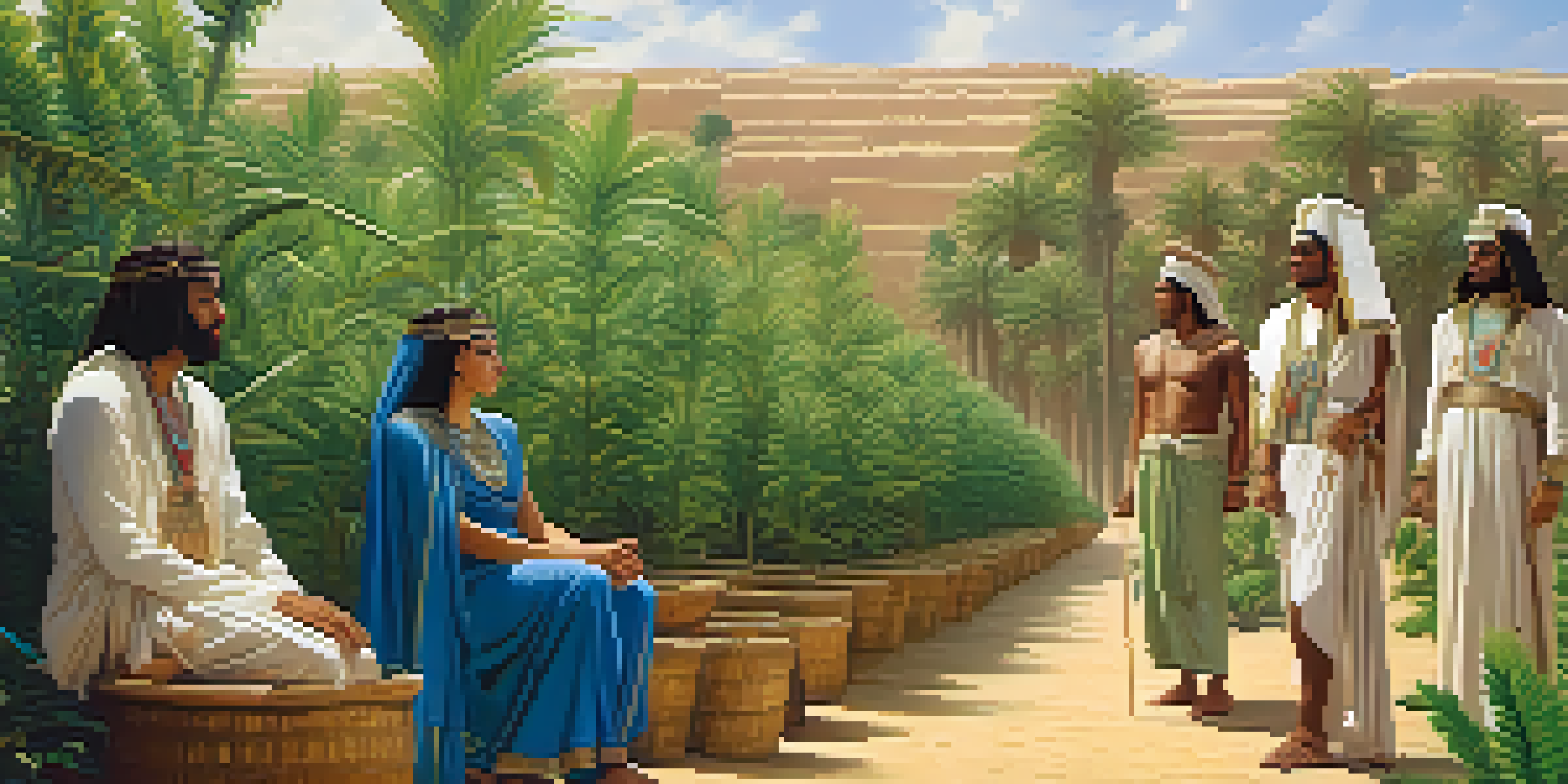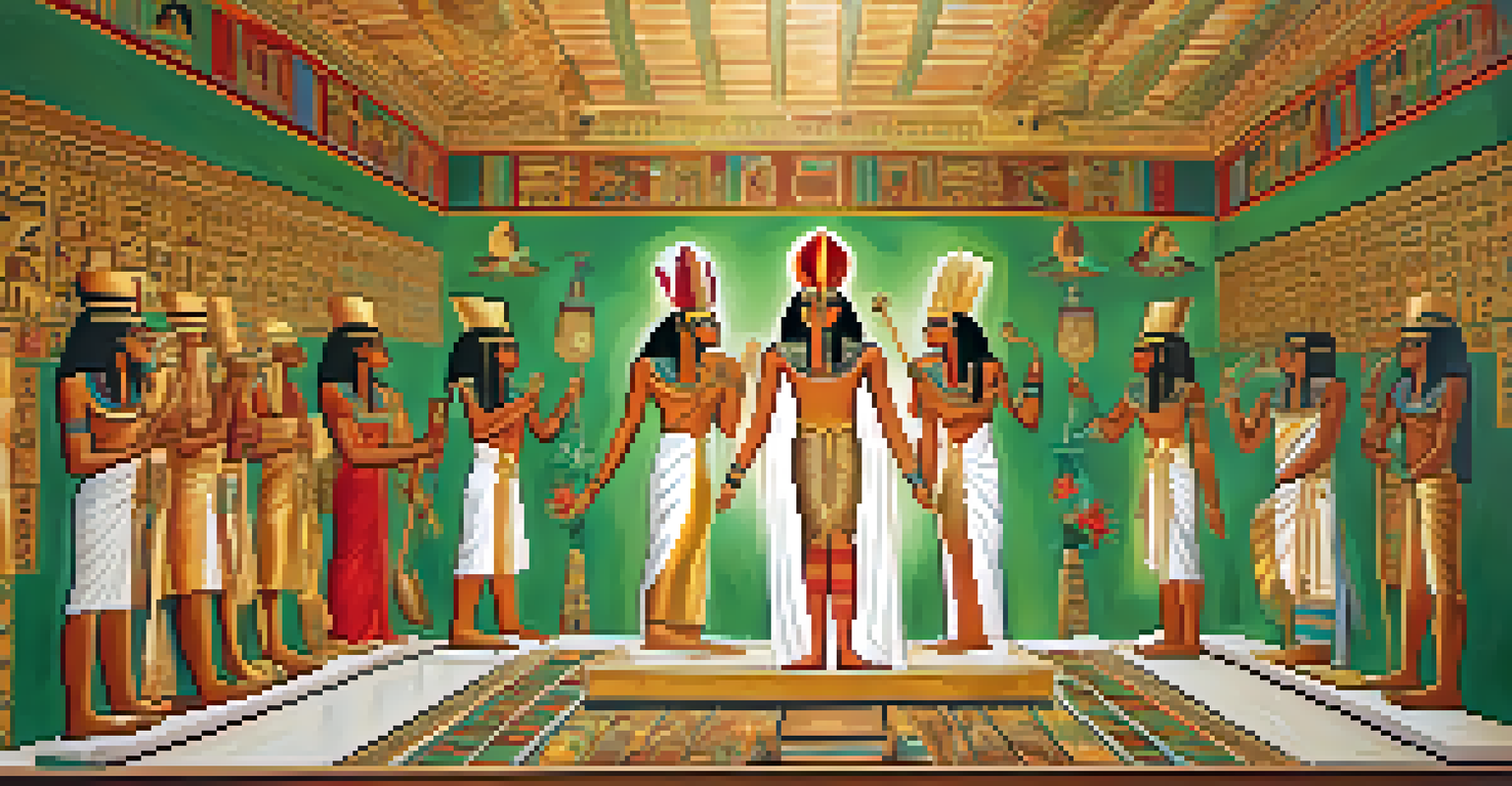Marijuana in Ancient Egypt: Uses and Cultural Significance

Historical Context of Marijuana in Ancient Egypt
Marijuana, known to the ancient Egyptians as 'shemshemet,' has deep roots in their civilization. Historical records indicate that its use dates back to around 2000 BCE, showcasing its long-standing presence in Egyptian life.
Herbal medicine is a perfect example of the natural healing power of plants, used throughout history to treat ailments and promote well-being.
The plant was not just a recreational substance; it was woven into the fabric of their culture, often associated with spirituality and healing. The Egyptians relied on various herbs, including marijuana, for medicinal purposes, which highlights their advanced understanding of natural remedies.
Understanding the historical context helps us appreciate how integral marijuana was to daily life in ancient Egypt, reflecting their holistic approach to health and spirituality.
Medicinal Uses of Marijuana in Ancient Egypt
The ancient Egyptians were pioneers in herbal medicine, and marijuana played a vital role. They utilized it to treat a range of ailments, from pain relief to gastrointestinal issues.

One of the most notable texts, the Ebers Papyrus, which dates back to 1550 BCE, mentions marijuana among other herbs prescribed for various conditions. This document serves as evidence of their sophisticated medical practices.
Marijuana's Role in Ancient Egypt
The ancient Egyptians utilized marijuana not only for medicinal purposes but also integrated it deeply into their cultural and spiritual practices.
By incorporating marijuana into their medicinal repertoire, the Egyptians demonstrated an impressive understanding of plant properties, which still resonates in modern herbal medicine.
Cultural Significance of Marijuana in Religious Practices
In ancient Egypt, marijuana held spiritual significance, often linked to rituals and religious ceremonies. It was believed to enhance connection to the divine, making it a valued resource for priests and practitioners.
The use of plants in religious and spiritual practices has been a part of human culture for millennia, serving as a bridge between the material and the divine.
The use of marijuana during rituals was thought to facilitate communication with the gods, offering a sense of transcendence. This highlights how the plant was more than just a physical substance; it served as a medium for spiritual exploration.
By examining these practices, we gain insight into how marijuana was intertwined with the Egyptians' beliefs and their quest for spiritual enlightenment.
Marijuana in Egyptian Art and Iconography
Art and iconography from ancient Egypt often reflect the significant role of marijuana in their society. Depictions of the plant can be found in various artifacts, hinting at its importance in daily life.
Many murals and carvings suggest that marijuana was celebrated and revered, indicating its acceptance and integration into their culture. These artistic representations serve as historical evidence of its cultural relevance.
Cultural Significance of Marijuana
Marijuana was revered in ancient Egyptian rituals, believed to enhance spiritual connection and facilitate communication with the divine.
Through these artistic expressions, we can appreciate how marijuana was not just a plant but a symbol of health, spirituality, and social practices in ancient Egypt.
Comparative Analysis with Other Ancient Civilizations
When exploring the use of marijuana, it’s interesting to compare ancient Egypt with other civilizations, such as Mesopotamia and China. Like the Egyptians, these cultures also recognized the plant's medicinal and spiritual properties.
This comparative analysis highlights a broader understanding of how ancient societies valued marijuana, suggesting that its significance transcended geographical boundaries.
By looking at these similarities, we can see how marijuana was a common thread in the tapestry of ancient human experience, linking diverse cultures through shared beliefs and practices.
Legal and Social Implications of Marijuana Use
The legal and social landscape surrounding marijuana in ancient Egypt was quite different from today. It was generally accepted as a part of life, with little stigma attached to its use for medicinal or spiritual purposes.
This acceptance fostered a culture where knowledge about cannabis was shared openly, allowing for advancements in its application. Unlike modern perceptions, the Egyptians viewed marijuana as a beneficial plant.
Lessons for Modern Medicine
Today, the exploration of ancient Egyptian marijuana practices highlights its potential benefits, encouraging a reevaluation of its medicinal properties.
Understanding these implications offers a fresh perspective on how societal norms around marijuana have evolved over millennia, reflecting changing attitudes toward this versatile plant.
Modern Perspectives on Ancient Egyptian Marijuana Use
Today, as we revisit ancient practices, there's growing interest in the medicinal properties of marijuana, echoing the Egyptians' ancient wisdom. Researchers are exploring how these historical uses can inform contemporary medicine.
Modern science is beginning to validate many of the historical claims regarding marijuana’s efficacy, shedding light on the significance of ancient practices. This bridging of past and present invites a reevaluation of how we view marijuana today.

By appreciating the historical context of marijuana in ancient Egypt, we can better understand its potential benefits in our own time and the lessons that can be gleaned from ancient wisdom.